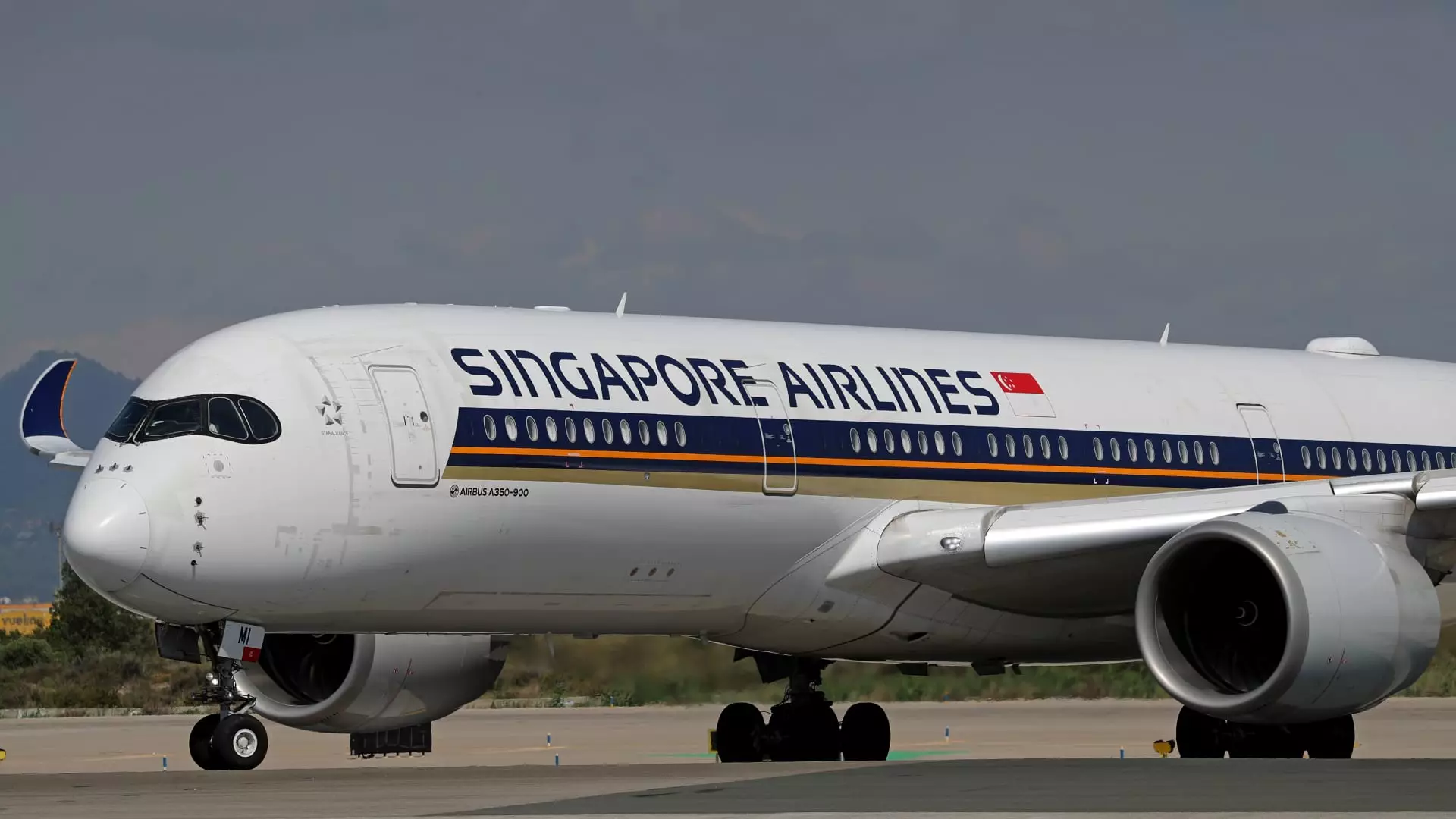Singapore Airlines has reported a significant downturn in its financial performance for the first half of its fiscal year, a setback that has rattled investors and market analysts alike. The airline’s net profit plummeted by nearly 50%, falling to SG$742 million (approximately $559 million) from SG$1.44 billion during the same period last year. This decline can largely be attributed to a combination of lower yields and mounting competition in the airline industry, as highlighted in the company’s latest earnings report.
As news of the financial results broke, shares of Singapore Airlines tumbled by as much as 6.2% at market opening on Monday, later stabilizing to a decrease of 3.57%. Such a decline illustrates the immediate impact that profit reports can have on investor confidence, showcasing how market sentiments are heavily influenced by financial performance, especially in industries experiencing rapid changes and fierce competition.
Despite the sharp decline in net profit, Singapore Airlines managed to increase its revenue by 3.7%, reaching SG$9.5 billion. This paradox of rising revenue against falling profits speaks volumes about the challenges that the airline faces in managing costs and yields against a backdrop of increasing capacity within the market. The operating profit mirrored this struggle, declining by 48.8%, down to SG$796 million, a stark contrast against prior year estimates.
The Chief Commercial Officer, Lee Lik Hsin, emphasized during the earnings briefing that the airline is grappling with intensifying global competition, which is exacerbated by competitors quickly restoring their operations to pre-COVID levels. The airline is witnessing tougher market conditions where enhanced capacity in key markets leads to lower yields—creating a challenging environment for profitability. This sentiment was reinforced by the CEO Goh Choon Phong, who noted that the increased competition directly pressures yield margins.
While passenger traffic did experience a year-on-year growth of 7.9%, this was undercut by an expansive growth in capacity of 11%. Consequently, this resulted in a decrease in the passenger load factor, which fell by 2.4 percentage points to 86.4%. Such a decline suggests that despite growing traveler interest, the available seat capacity is not being fully utilized, indicating a potential oversupply in certain markets amidst heavy competition.
Looking forward, Singapore Airlines remains optimistic about the second half of the financial year, anticipating robust demand for air travel. However, the company acknowledges that the operating landscape will continue to be fiercely competitive. Furthermore, Singapore Airlines has unveiled an ambitious SG$1.1 billion cabin retrofit program aimed at enhancing its long-range and ultra-long-range Airbus A350 jets, with the first of the retrofitted aircraft expected to enter service by 2026. This strategic move signifies the airline’s commitment to maintaining a competitive edge through modernization while navigating a challenging market environment.
Through these financial and operational insights, it is clear that Singapore Airlines is facing a critical juncture that will require agile strategies and innovative solutions to counteract declining profitability and navigate escalating competition.

